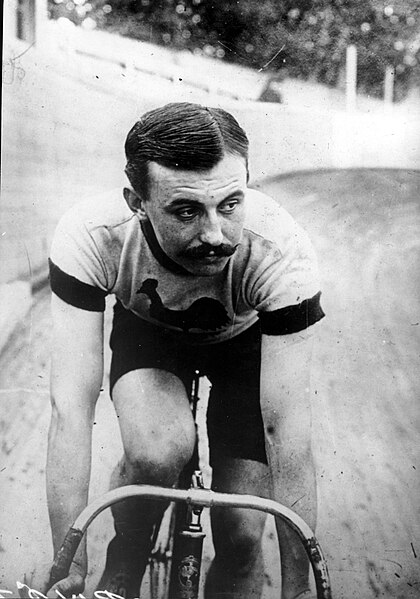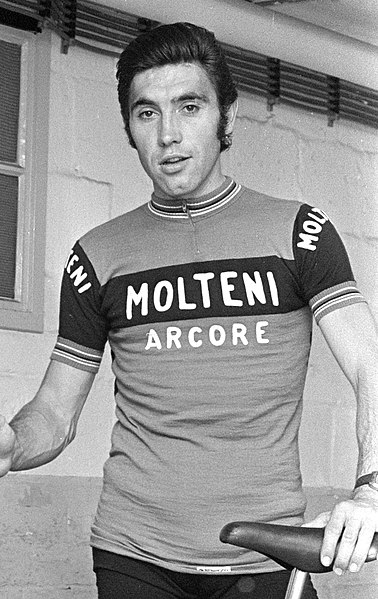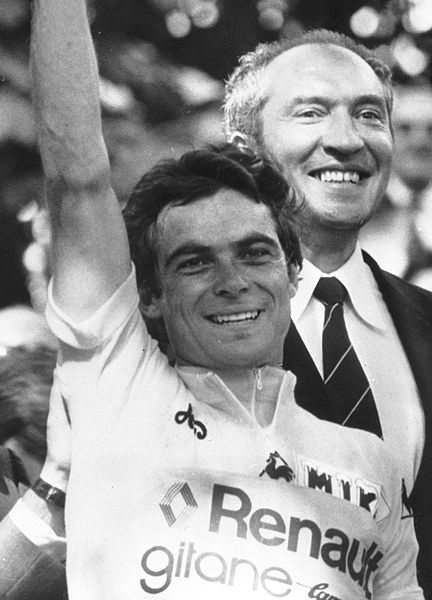The 1907 Tour de France was the fifth running of the annual Tour de France, one of cycling's Grand Tours. From 8 July to 4 August, the 93 cyclists cycled 4488 km (2,788 mi) in fourteen stages around France. The winner, Lucien Petit-Breton, completed the race at an average speed of 28.47 km/h (17.69 mi/h). For the first time, climbs in the Western Alps were included in the Tour de France. The race was dominated at the start by Émile Georget, who won five of the first eight stages. In the ninth stage, he borrowed a bicycle from a befriended rider after his own broke. This was against the rules; initially he received only a small penalty and his main competitors left the race out of protest. Georget's penalty was then increased and Lucien Petit-Breton became the new leader. Petit-Breton won two of the remaining stages and the overall victory of the Tour.
Lucien Petit-Breton, the winner of the 1907 Tour de France
In road bicycle racing, a Grand Tour is one of the three major European professional cycling stage races: Giro d'Italia, Tour de France, and Vuelta a España. Collectively they are termed the Grand Tours, and all three races are similar in format, being three-week races with daily stages. They have a special status in the UCI regulations: more points for the UCI World Tour are distributed in Grand Tours than in other races, and they are the only stage races allowed to last longer than 14 days, and these differ from major stage races more than one week in duration.
Image: Jacques Anquetil 1966
Image: Felice Gimondi 1966
Image: Eddy Merckx Molteni 1973
Image: Bernard Hinault 1978 (cropped)





